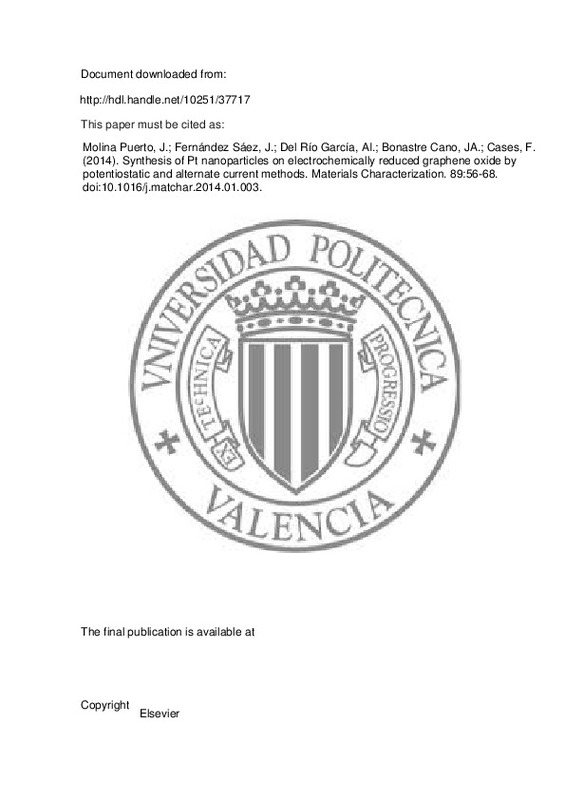JavaScript is disabled for your browser. Some features of this site may not work without it.
Buscar en RiuNet
Listar
Mi cuenta
Estadísticas
Ayuda RiuNet
Admin. UPV
Synthesis of Pt nanoparticles on electrochemically reduced graphene oxide by potentiostatic and alternate current methods
Mostrar el registro completo del ítem
Molina Puerto, J.; Fernández Sáez, J.; Del Río García, AI.; Bonastre Cano, JA.; Cases Iborra, FJ. (2014). Synthesis of Pt nanoparticles on electrochemically reduced graphene oxide by potentiostatic and alternate current methods. Materials Characterization. 89:56-68. https://doi.org/10.1016/j.matchar.2014.01.003
Por favor, use este identificador para citar o enlazar este ítem: http://hdl.handle.net/10251/37717
Ficheros en el ítem
Metadatos del ítem
| Título: | Synthesis of Pt nanoparticles on electrochemically reduced graphene oxide by potentiostatic and alternate current methods | |
| Autor: | Fernández Sáez, Javier Del Río García, Ana Isabel | |
| Entidad UPV: |
|
|
| Fecha difusión: |
|
|
| Resumen: |
Reduced graphene oxide (RGO) has been synthesized on Pt wires by means of a potentiodynamic method between +0.6 V and -1.4'V for 20 scans. Cyclic voltammetry characterization of the coatings showed the typical capacitative ...[+]
|
|
| Palabras clave: |
|
|
| Derechos de uso: | Reserva de todos los derechos | |
| Fuente: |
|
|
| DOI: |
|
|
| Editorial: |
|
|
| Código del Proyecto: |
|
|
| Agradecimientos: |
Authors wish to thank to the Spanish Ministerio de Ciencia e Innovacion (contract CTM2011-23583) and Universitat Politecnica de Valencia (Vicerrectorado de Investigacion PAID-06-10 contract 003-233) for the financial ...[+]
|
|
| Tipo: |
|







![[Cerrado]](/themes/UPV/images/candado.png)


